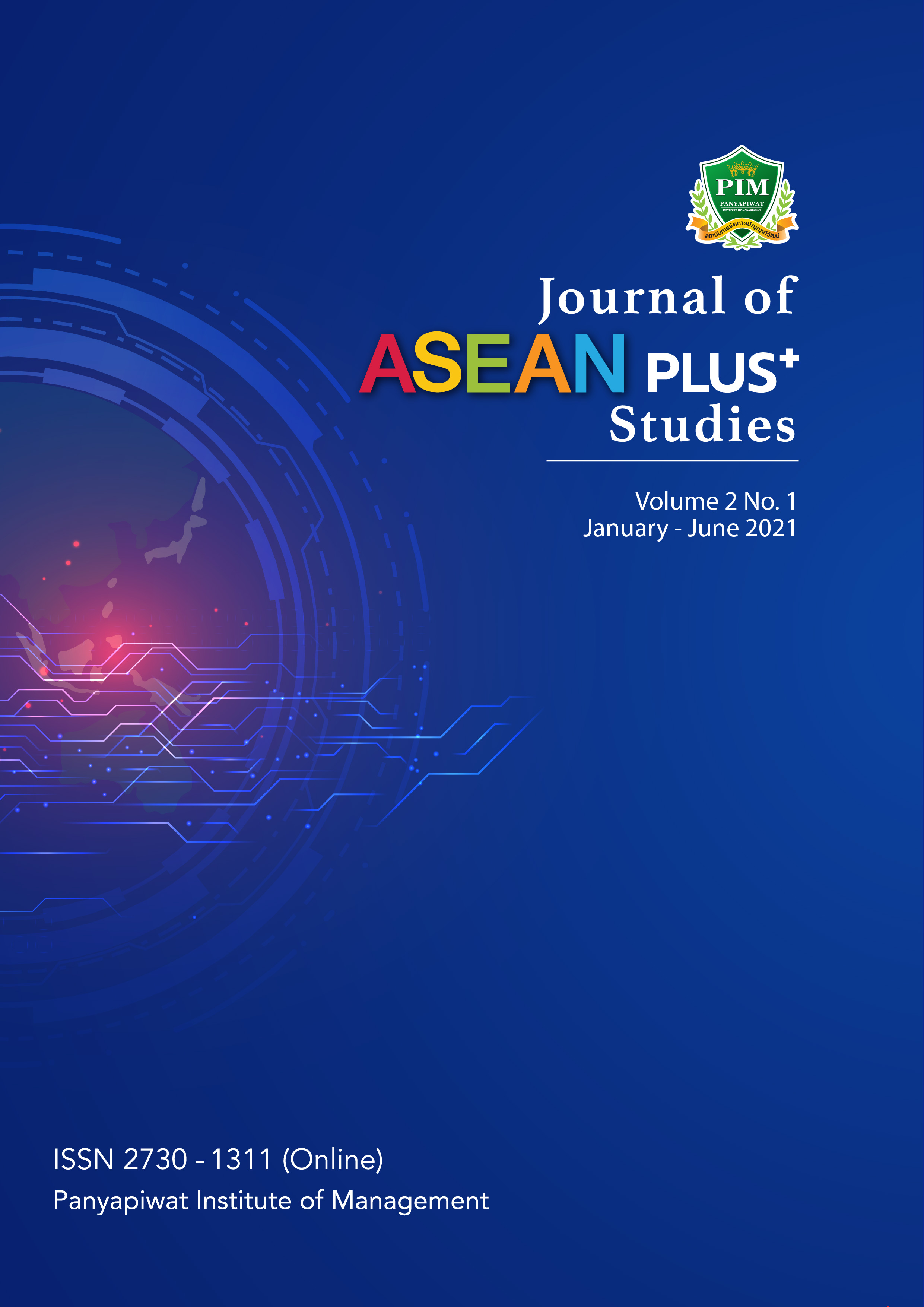Explicating Purchase Intention in the Nighttime Economy: Nightclubs and Bars
Keywords:
Nightclubs and bars purchase intention nighttime economyAbstract
Abstract
The purposes of this study are to understand and analyze determinants that drive demand intention in the field of nightclubs and bars in urban Bangkok, Thailand. This exploratory research will examine the significance and contribution of atmosphere, drinks’ variety and quality, accessibility, price, and service crew as independent variables to customers’ purchase intention and formulate a strategic body of knowledge for business operators to adapt and improve their performances. This research follows a quantitative research methodology and was conducted during COVID-19 outbreak in 2020. Self-administered questionnaire surveys were distributed through online channels with convenience sampling technique. Data sets of 310 respondents were used in partial least square structural equation modeling (PLS-SEM). The results reveal a significant relationship between purchase intention and atmosphere, drinks’ variety and quality, and service crew, and an insignificant relationship between purchase intention and accessibility and price. Strategies were crafted and recommended for managerial usage.
References
References
Becker, J., Ringle, C., Sarstedt, M., & Völckner, F. (2014). How Collinearity Affects Mixture Regression Results. Marketing Letters, 26(4). Retrieved October 25, 2020, from https://doi.org/10.1007/s11002-014-9299-9
Berry, L., Seiders, K., & Grewal, D. (2002). Understanding Service Convenience. Journal of Marketing, 66(3). Retrieved October 25, 2020, from https://doi.org/10.1509/jmkg. 66.3.1.18505
Bhaya, A.(2020).China’s Night Economy Surges Amid COVID-19 Lifestyle Changes. Retrieved September 5, 2020, from https://news.cgtn.com/news/2020-05-13/China-s-night-economy-surges-amid-COVID-19-lifestyle-changes-Qsvy8jrWjC/index.html
Brakus, J., Schmitt, B., & Zarantonello, L. (2009). Brand Experience: What Is It? How Is It Measured? Does It Affect Loyalty?. Journal of Marketing, 73(3). Retrieved October 25, 2020, from https://doi.org/10.1509/jmkg.73.3.52
Edensor, T. (2012). Illuminated Atmospheres: Anticipating and Reproducing the Flow of Affective Experience in Blackpool. Environment And Planning D: Society and Space, 30. Retrieved October 25, 2020, from https://doi.org/10.1068/d12211
Fornell, C., & Larcker, D. (1981). Evaluating Structural Equation Models with Unobservable Variables and Measurement Error. Journal of Marketing Research, 18(1). Retrieved November 10, 2020, from doi:10.2307/3151312
Green, S. (1991). How Many Subjects Does It Take To Do A Regression Analysis. Multivariate Behavioral Research, 26(3). Retrieved September 05, 2020, from https://doi.org/10.1207/s15327906mbr2603_7
Hair, J., Hult, G., Ringle, C., & Sarstedt, M. (2017). A Primer on Partial Least Squares Structural Equation Modeling (PLS-SEM). New York: SAGE Publications.
Hair, J., Ringle, C., & Sarstedt, M. (2011). PLS-SEM: Indeed a Silver Bullet. Journal of Marketing Theory and Practice, 19(2). Retrieved November 10, 2020, from https://doi.org/10.2753/mtp1069-6679190202
Hair, J., Risher, J., Sarstedt, M., & Ringle, C. (2018). When to Use and How to Report the Results of PLS-SEM.
European Business Review, 31(1). Retrieved November 10, 2020, from https://doi.org/10.1108/EBR-11-2018-0203
Heale, R., & Twycross, A. (2015). Validity and Reliability in Quantitative Studies. Evidence Based Nursing, 18(3). Retrieved November 10, 2020, from https://doi.org/10.1136/eb-2015-102129
Henseler, J., Ringle, C., & Sarstedt, M. (2015). A New Criterion for Assessing Discriminant Validity in Variance-Based Structural Equation Modeling. Journal of the Academy of Marketing Science, 43(1). Retrieved November 10, 2020, from https://doi.org/10.1007/s11747-014-0403-8
Hussain, R., & Ali, M. (2015). Effect of Store Atmosphere on Consumer Purchase Intention. International Journal of Marketing Studies, 7(2). November 10, 2020, from https://doi.org/10.5539/ijms.v7n2p35
Karunarathne, L., & Ariyawansa, R. (2015). Analysis of House Purchase Intention. Sri Lankan Journal of Management, 20(3&4), 28-51. Retrieved September 8, 2020, from
https://www.researchgate.net/publication/304989197
Kasikorn Research Center. (2020). KR-ECI Declined in July 2020 as Households were More Concerned about Debt Despite Second Phase of Assistance Measures for Borrowers. Retrieved September 8, 2020, from https://kasikornresearch.com/en/analysis/k- econ/economy/Pages/KR-ECI_0820-TH.aspx






